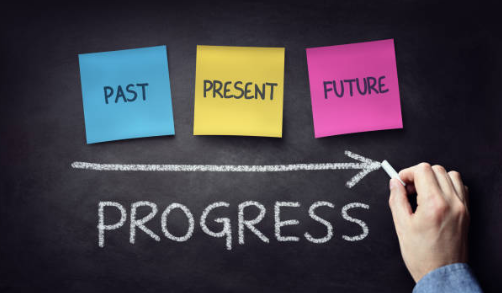Visualization for Motivation
Learn how to use visualization to motivate yourself to achieve your goals.

Selfpause Affirmation App
Download the app to get 1,000’s of affirmation meditations and everything you need to write, record and listen to your own.
Visualization is a natural process of the brain that simulates future experiences. It happens so automatically that we don’t even realize we’re doing it. But if we are aware of our visualization, we can actively direct it. By directing it, we can better achieve our goals. So let’s look at some ways to use visualization for motivation.
Creating a vision board

Creating a vision board for motivation is a great way to focus on your goals and create a positive atmosphere in your life. You can be as specific or as general as you like, but make sure your goals align with your personal values. Ask yourself questions like, “What gives me purpose?”, “Who do I want to be?”, “How do I want to use my time?”, and other value-based questions before creating your board.
There are many different types of vision boards, so look for inspiration from others to create your own. Look for images of things that resonate with your goals, or choose photos from the internet that represent what you want to achieve. Then, decide on a format. You can dedicate a whole wall to your vision board, or you can create a traditional poster or bulletin board. Many websites have tools to help you create a vision board, and you can access them from any computer.
Using a vision board to set goals can help you visualize the outcomes you desire and help you get motivated to reach them. When you have a visual representation of what you want, your mind will focus more easily on those things. This will make it easier to work towards your goals and clear out unhelpful thoughts.
Keeping your vision board updated is an important part of the process. Make sure to update it at least once a week or daily, depending on your motivation and the number of goals you want to reach. This is important because it keeps you inspired and motivated. It is also helpful to keep a picture of your vision board so that you can look back and compare your progress.
The image you place on your vision board can help you activate the Law of Attraction. By using the Law of Attraction, you can attract opportunities and resources that will help you reach your goals. However, you must be sure that the images and ideas you put on your vision board align with your goals.
Creating a mental picture of a specific goal or event
Creating a mental image of a specific goal or event for motivation has a range of benefits. In some cases, it is even possible to improve one’s performance. A good example of this is when a person is trying to quit smoking. He or she can imagine having healthy lungs while visualizing the red ring of a cigarette in his or her mind. Mental imagery can also be helpful in sports training. Athletes can use mental images of a game, event, or song before a competition.
One way to use visualization is to pick a goal or dream and focus on it. Visualizing your goal will help you feel more confident and courageous. It can help you overcome challenges, achieve goals, and make decisions. For best results, choose a goal or dream that you would like to achieve and visualize it with all your senses.
Creating a mental picture of a specific activity

Creating a mental picture of a particular activity is an effective method for increasing motivation. It works by increasing the anticipated pleasure and reward associated with a planned activity. Furthermore, this strategy increases behavioral engagement during the activity. This study shows that creating a mental picture of a specific activity is effective for increasing motivation and engagement in planned activities.
Participants were given a script to read in which they were instructed to create a mental picture of their target activities in a positive way. During this imagery task, participants were instructed to close their eyes and focus on the positive aspects of the image. The script also instructed them to focus on contextual cues associated with the activity, as well as multisensory engagement.
The script of this technique was similar to that of affective forecasting imagery but was aimed at inducing an emotionally neutral mental picture of the activity in question. Participants were instructed to imagine themselves participating in the activity in as much detail as possible. As a result, the script was effective in boosting motivation for participants who had previously put off activities.
The researchers found that creating a mental picture of a specific activity increases the anticipation of reward and pleasure. However, the results did not consistently translate into behavior. This is likely because of other factors, such as organizational constraints or lack of time. Moreover, participants in the non-clinical group averaged 4.6 activities per week, which may not have been sufficiently challenging.
Our Top FAQ's
Visualization can be used to increase motivation in a few different ways. First, creating a visual representation of your goals can help make them feel more concrete and achievable. Seeing your goals represented in a visual form can help you feel more motivated to work towards them. Additionally, visualization techniques can be used to track progress towards your goals, which can help you feel a sense of accomplishment and stay motivated.
There are a few different ways you can create a visual representation of your goals. One way is to create a vision board, which is a collage of images, quotes, and other visual elements that represent your goals and aspirations. You can also create a goal map, which is a visual representation of the steps you need to take to reach your goals. Alternatively, you could create a simple list or chart that tracks your progress towards your goals.
Visualization techniques can be used to track progress and stay motivated in a few different ways. For example, you could create a chart or graph that shows your progress over time. This can help you see how far you’ve come and motivate you to keep going. You could also create a visual representation of your goals and track your progress by adding elements or marks to the visual as you make progress. For example, if your goal is to run a marathon, you could create a visual representation of a marathon route and add a mark for each mile you run.
Visualization techniques can be used to motivate a team or group towards a common goal by creating a visual representation of the goal and the steps needed to achieve it. This can help the team understand the overall objective and stay focused and motivated as they work towards it. Visualization can also be used to track progress and celebrate achievements as the team works towards their goal.
Visualization can help overcome challenges or setbacks in the pursuit of goals and maintain motivation in a few different ways. First, creating a visual representation of your goals can help you stay focused and motivated, even when you encounter setbacks. Seeing your goals represented visually can help you stay motivated to continue working towards them. Additionally, visualization techniques can be used to track progress and help you see that you are making progress, even if it is slow. This can help you stay motivated and keep going, even when you encounter challenges.
